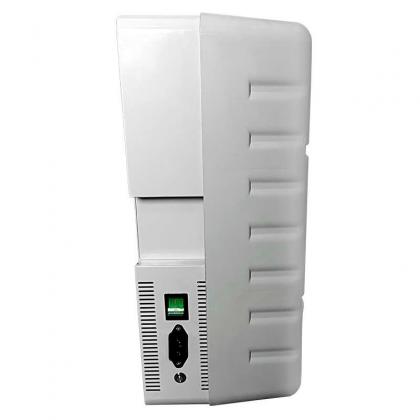Understanding the propagation law of the radio wave band helps us use signal jammer.
5. 15m frequency band (21.00~21.450MHz)
This is another entry frequency band for shortwave beginners, and it is also a good DX frequency band. This frequency band is mainly due to the reflection of the F2 layer of the ionosphere. Changes in solar activity, day and night, and four seasons have a greater impact on this frequency band. When solar activity is relatively active, this band is the main band for DX contact, but at low tides of solar activity Period, it is more difficult to carry out long-distance communication. In the spring and autumn seasons, the Americas can be opened in the morning, Oceania and Southeast Asia in the afternoon, and Europe and Africa in the evening. Most international competitions and radio expeditions can operate in this frequency band. The background noise of this frequency band is relatively small, and the antenna size is relatively small, and DX communication can be carried out with low power. Therefore, even the installation conditions of narrow antennas such as apartment buildings in the city can meet the requirements, even on balconies or windows. DX communication can also be carried out from the antenna. At the same time, there are also many HAMs that use this frequency band for mobile applications. They can set up simple antennas in the field during holidays to enjoy the nature and enjoy the fun of DXQSO. In this frequency band, 21.400MHz is the calling frequency of Chinese amateur radio enthusiasts. Many Chinese HAMs are listening here, and there are also many foreign radio stations that specifically call Chinese radio stations on this frequency. The high-gain Yagi Rotating Directional Antenna is often used for this fixed frequency as DX.
Because the wavelength is relatively short, the antenna is easier to self-made, so many beginners use self-made antennas for communication.

6. 10m frequency band (28.00~29.70MHz)
This is the highest frequency band in the short-wave band and the widest frequency band in the short-wave band. The propagation characteristics of this band are between HF and VHF. The main feature is that it is greatly affected by solar activity and has sudden E-layer propagation. The ionospheric attenuation is small, the frequency noise is small, and the antenna gain is easy to increase. When there is no reflection in the ionosphere, it can only be used for line-of-sight propagation. When the transmission is turned on, unexpected long-distance communication can be carried out with a small amount of power. Another feature of this frequency band is the only FM frequency band that can be used in the HF band. Once the FM signal is greater than the receiving threshold, it will have very good anti-interference performance. Due to the effect of the limited amplitude circuit, the signal-to-noise ratio and sound quality of the signal are very good. Well, the FM transceiver is also easy to manufacture and adjust, and the success rate of manufacture is very high. Therefore, it is very suitable for beginners to start self-made. The 29.600MHz frequency is an international FM calling frequency. Many domestic and foreign FM enthusiasts in the 10m band use FM to communicate. When the broadcast is open, it is very lively. This frequency mostly uses high-gain directional antennas and various vertical antennas, and the HAM using homemade antennas is not small.
7. 6m frequency band (50.00~54.00MHz)
This is the famous entry frequency band for beginners, also known as the "magic band". The main reason is that the propagation characteristics of this band are between HF and VHF. During the active period of solar activity, sudden E ionospheric propagation will occur. Radio waves propagate through the anomaly of sudden E ionosphere, which can be carried out with very small power. Global DX communications. It is a band for DX enthusiasts. At the front end of this band, amateur radio enthusiasts organizations have set up beacon stations in various parts of the world. These beacon stations transmit beacon signals in turn 24 hours a day. We only need to receive the beacon signals from these beacon stations, You can understand the opening of the band in real time, and some enthusiasts can listen to and record the signal conditions of these beacon stations to explore the magical laws of the occurrence and propagation of sudden E ionosphere. The more famous calling frequency in this frequency band is 50.110MHz. Many 6m-band DX hunters lie in ambush here. Once the transmission is opened, they will fight for the short time of opening to communicate. The wavelength of this frequency band is relatively short, which is suitable for antenna and circuit experiments. Now there are more handheld walkie-talkies in this band, making portable mobile applications possible. I once heard that AM can use a small 3W cell phone to communicate with Japanese radio stations at my doorstep. What an amazing experience.
